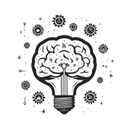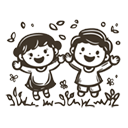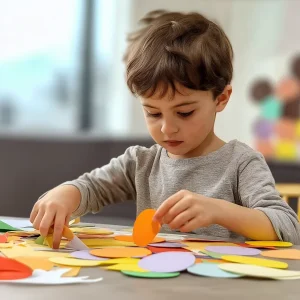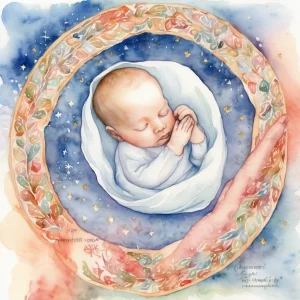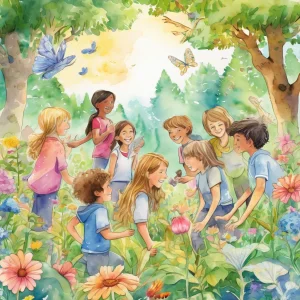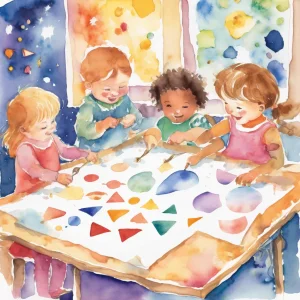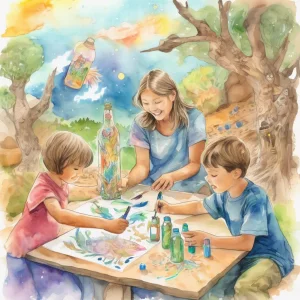Activity
Similar Activities
Nature Scavenger Hunt: Adventure in the Wild
Children’s Age: 4–9 years
Activity Duration: 10 minutes
An outdoor, nature-based activity promoting ecological awareness and cognitive development in children aged 4-9 years.
Activity Duration: 10 minutes
Rainbow Caterpillar Creation: A Colorful Adventure
Children’s Age: 6–10 years
Activity Duration: 10 – 20 minutes
In this fun activity called "Creating a Colorful Caterpillar," children can explore their creativity and improve their fine motor skills and understanding of sequencing. To begin, …
Activity Duration: 10 – 20 minutes
Magical Storytelling: Create Together with Friends
Children’s Age: 4–6 years
Activity Duration: 15 – 30 minutes
In the Create a Story Together activity, children will explore their creativity, language skills, and teamwork. Get small pieces of paper, colored pencils, and a container ready. K…
Activity Duration: 15 – 30 minutes
Holiday Textures Sensory Exploration for Infants
Children’s Age: 0 – 3 months
Activity Duration: 5 minutes
Engage infants aged 0 to 3 months in sensory play with this holiday textures exploration activity. Use soft fabrics, textured toys, and optional holiday-scented items in a quiet, s…
Activity Duration: 5 minutes
Diversity Dreams: Culture Collage Adventure
Children’s Age: 10–12 years
Activity Duration: 45 minutes
Explore diversity and friendship with the "Culture Collage" activity for kids aged 10-12. Encourage play skills, self-regulation, and understanding of society through creating coll…
Activity Duration: 45 minutes
Whimsical Collage Creations: A Colorful Adventure
Children’s Age: 2–2.5 years
Activity Duration: 5 – 10 minutes
"Colorful Collage Creations" is a creative activity designed for children aged 24 to 30 months to enhance cognitive skills, communication abilities, and creativity. With colored pa…
Activity Duration: 5 – 10 minutes
Enchanted Forest Math Quest: Nature's Math Adventure
Children’s Age: 12–16 years
Activity Duration: 1 hour
Nature's Math Adventure is an engaging activity designed for children aged 12 to 16 years. It promotes cognitive development, ecological awareness, and healthy habits while incorpo…
Activity Duration: 1 hour
Musical Magic: Let's Make Homemade Shaker Instruments
Children’s Age: 2–3 years
Activity Duration: 15 minutes
Join the fun of making homemade shaker instruments! This activity is perfect for children aged 24 to 36 months, encouraging creativity and cognitive development. Gather materials l…
Activity Duration: 15 minutes
Shape Discovery Adventure: Shape Sorting and Matching
Children’s Age: 2–2.5 years
Activity Duration: 10 minutes
This shape sorting and matching activity is designed for children aged 24 to 30 months to enhance their cognitive skills through shape recognition and matching. Using colorful cons…
Activity Duration: 10 minutes
Eco-Friendly Piggy Bank Crafting: Saving with Style
Children’s Age: 10–12 years
Activity Duration: 35 – 45 minutes
In the Eco-Friendly Piggy Bank Crafting activity, children will make their piggy banks using stationery materials to learn about saving money, reusing items, and environmental awar…
Activity Duration: 35 – 45 minutes
Enchanted Monochrome World: Black and White Card Exploration
Children’s Age: 0 – 3 months
Activity Duration: 5 minutes
"Black and White Card Exploration" is a wonderful activity tailored for infants aged 0 to 3 months, aiming to boost cognitive development through high-contrast black and white patt…
Activity Duration: 5 minutes
Magical Melodies: Sensory Sound Exploration
Children’s Age: 3 – 9 months
Activity Duration: 5 – 10 minutes
Engage infants aged 3 to 9 months in the Sensory Sound Exploration activity to boost communication, cognitive, and language skills through sensory play. Set up a safe play area wit…
Activity Duration: 5 – 10 minutes


